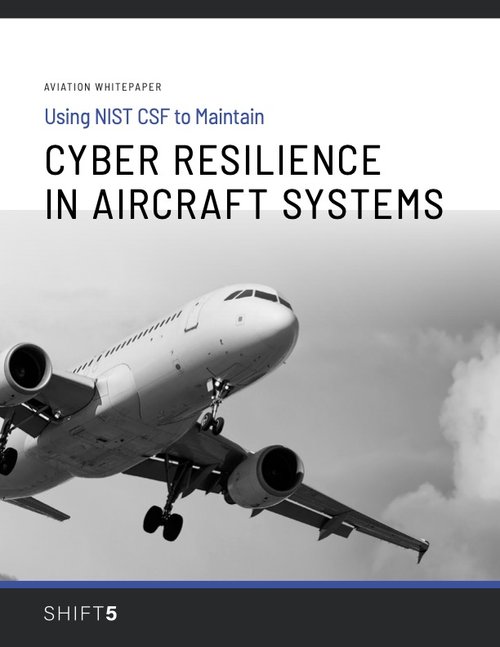
WHITEPAPER
USING NIST CSF TO MAINTAIN CYBER RESILIENCE IN AIRCRAFT SYSTEMS
At any given time, thousands of massive, complex supercomputers travel at 450 knots 36,000 feet above our heads. Tens of thousands more are on the ground awaiting passengers or maintenance. These marvels of interconnected operational and digital technologies are the backbone of an industry that supports over $3.5 trillion in global economic activity (4.1% of global GDP), transports over four billion passengers and 61 million tons of freight per year, and supports over 11 million direct and 75 million indirect jobs around the world.
With so much on the line, it’s easy to understand why commercial aircraft need protection from cyber attacks, but it’s difficult to understand why they don’t have that protection.
Key takeaways:
→ Discusses the importance of comprehensive observability of the components and networks found on today’s digital, connected aircraft to get ahead of risks and eventual new regulations for these types of aircraft.
→ Explores how and why operators should apply modern principles of IT cybersecurity, like the NIST Cybersecurity Framework (CSF), to connected air fleets to help ensure the safety and security of air travel.
